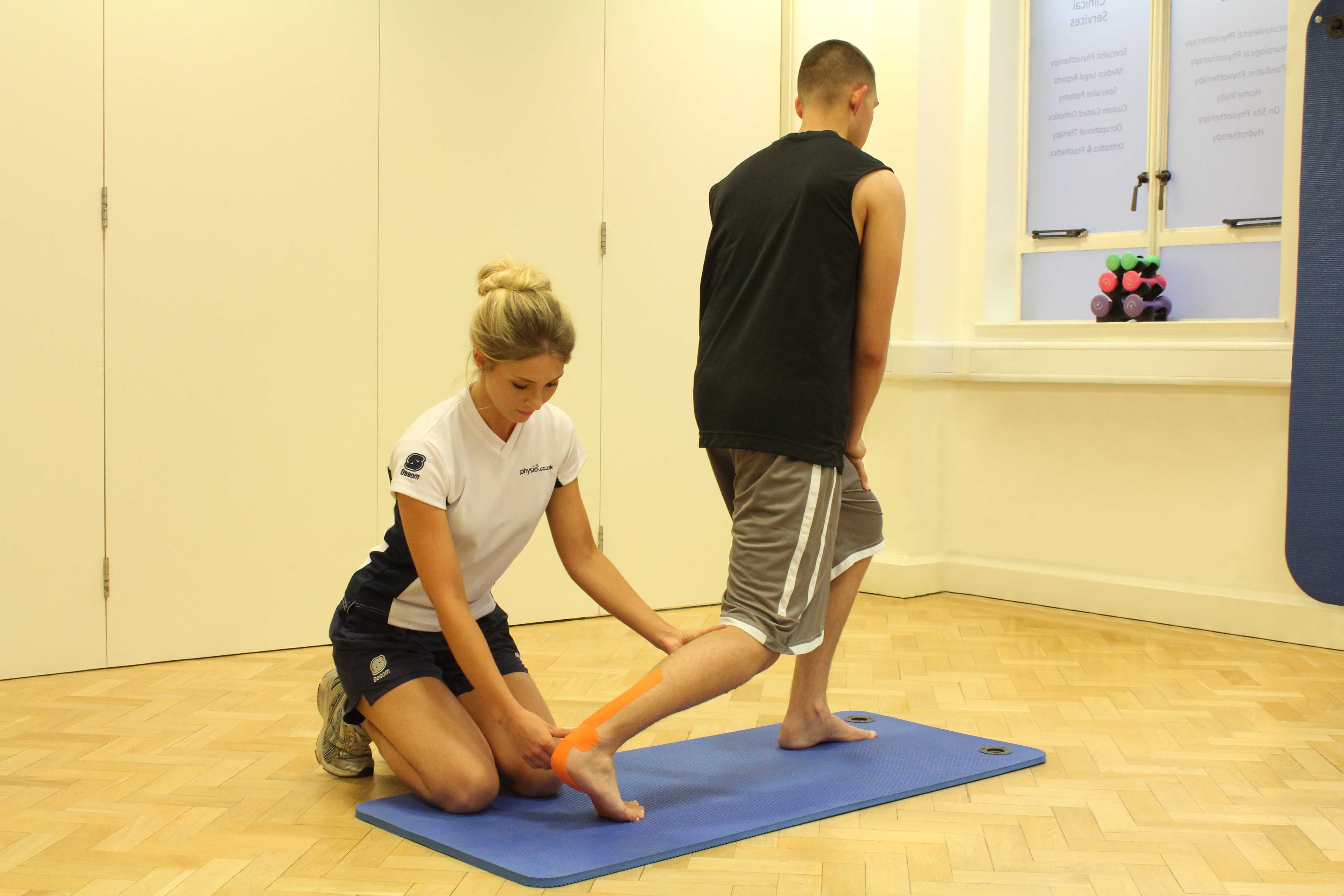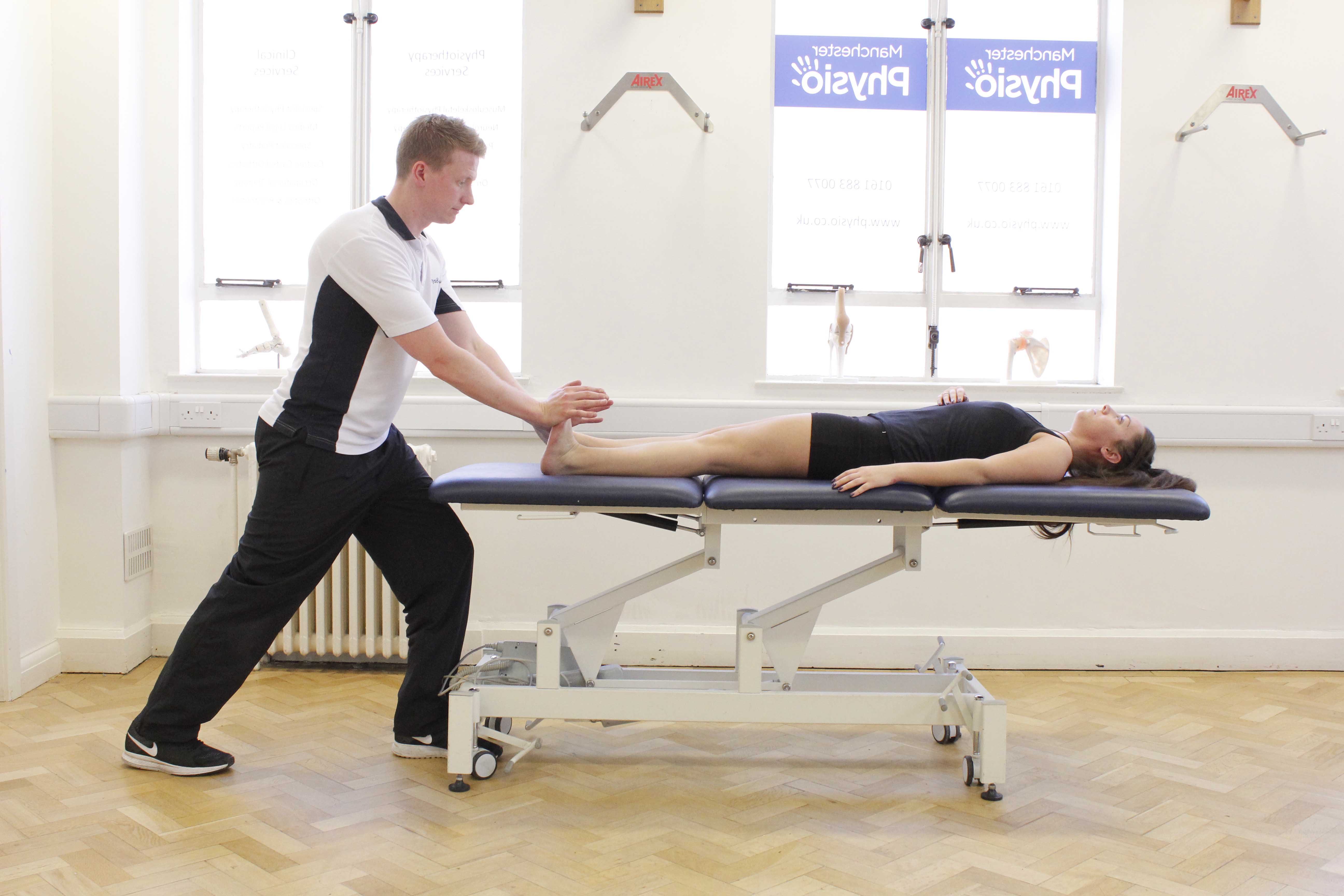What is ankle instability?
If the ankle loses some of its support from surrounding structures or often feels like it might ‘give way’, this is known as ankle instability. Physiotherapy is an effective treatment of ankle instability.
 Above: Supportive tape applied to ankle by experienced therapist
Above: Supportive tape applied to ankle by experienced therapistHow does ankle instability happen?
The support can be lost by damage to the outer (lateral) ligaments including:
- Anterior talofibular ligament
- Posterior talofibular ligament
- Calcaneofibular ligament
What are the symptoms of ankle instability?
The main symptom of ankle instability is a feeling that your ankle is going to give way when walking or carrying out sports and other activities. Other possible symptoms include:
What should I do if I have ankle instability?
You should see a physiotherapist as soon as possible if you suspect you may have symptoms of ankle instability. You physiotherapist will be able to provide you with a full assessment of you ankle to determine the exact location and cause of instability. If other structures are involved, you may to have an X-ray or MRI scan to identify other areas of injury.
 Above: Passive stretch of the achilles tendon performed by specialist therapist
Above: Passive stretch of the achilles tendon performed by specialist therapistWhat shouldn’t I do if I have ankle instability?
You should try and avoid any activities which make the ankle feel like it might give way. This could be certain sports or walking on uneven surfaces which places more strain on the ankle joint. Do not ignore your symptoms of ankle instability as this could delay healing and prolong your recovery.
Physiotherapy treatment following ankle instability.
Physiotherapy is an essential part of the rehabilitation for ankle instability. Your physiotherapist will tailor you programme to suit your needs and personal goals. Potential treatments may include: Specific exercises to help you return to your hobbies or sports is also an important part of your physiotherapy programme.
Could there be any long-term effects from ankle instability?
If an appropriate physiotherapy programme is followed, your ankle instability should be resolved with minimal complications. However, if the injury is more chronic (long-term), your rehabilitation may take longer.
To arrange a physiotherapy assessment call Physio.co.uk on 0330 088 7800 or book online.

 0330 088 7800
0330 088 7800


































